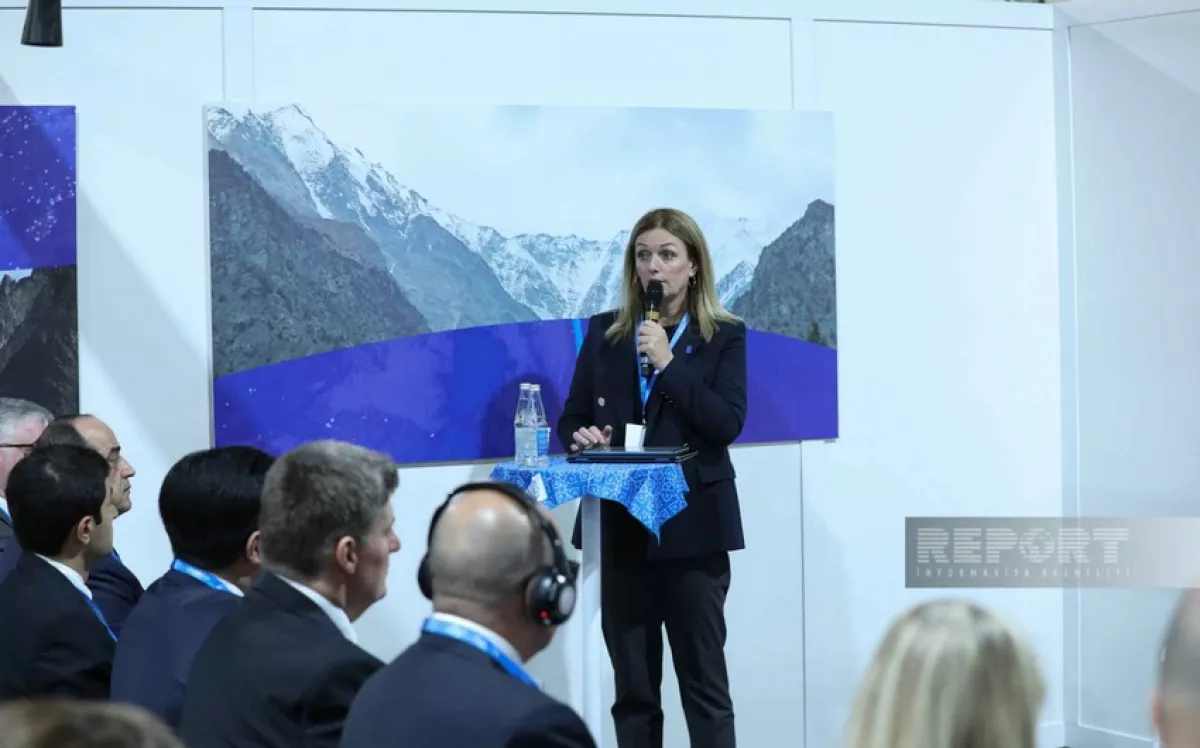Mine Action Agency chairman highlights ecological damage from 1.5 million mines in Azerbaijan
Chairman of the Board of the Mine Action Agency of the Republic of Azerbaijan (ANAMA) Vugar Suleymanov has said that approximately 1.5 million mines, placed in the Azerbaijani territories during the occupation of lands by Armenia, have caused significant ecological harm.
Suleymanov made these remarks during the event "Clearing the Way: Combating Mine Threats for Climate Resilience and Sustainable Development" which is being held as part of COP29, Caliber.Az reports citing local media.
"Mines and unexploded ordnance have destroyed the once-rich biodiversity of the soil, contaminated fertile lands, and caused damage to agriculture," Suleymanov noted.
The chairman of ANAMA emphasised that mine clearance not only is a matter of security but also crucial for climate resilience and sustainable development.
"As more than 170,000 hectares of mine-contaminated land are being cleared, new opportunities are emerging for environmental restoration, biodiversity renewal, and sustainable agriculture. These cleared areas also contribute to infrastructure rebuilding and the return of displaced people," he said.
He further noted that, despite the scale of these efforts, external investments account for only 4.4 per cent of the total funding.
"To clear all mined areas in our country and address the broad range of environmental consequences these threats pose, it is essential to strengthen global support," he added.

Moreover, UN Assistant Secretary-General and Director of the UNDP Regional Bureau for Europe and the CIS, Ivana Živković has said that environmental organisations can collaborate to promote sustainable development, restore, and preserve ecosystems affected by conflicts.
She emphasised that mines and unexploded ordnance pose a significant risk not only to human lives but also to the environment.
"These remnants of conflict continue to endanger both people and the ecosystems that are crucial for sustainable development," she stated. “Soil restoration and the revival of flora and fauna take time, and we have gathered here to discuss how mine clearance and environmental protection can be integrated. New technologies, such as drones and eco-friendly tools, are creating opportunities for more efficient and safer demining operations,” Živković said.
She also emphasised the longstanding collaboration between UNDP and ANAMA, which has been ongoing for 25 years.
"Together, we are working to eliminate the threats posed by mines and unexploded ordnance, and we are always ready to expand our partnership in pursuit of our shared goal," Živković added.
Armenia’s mining activities during its occupation of Azerbaijani territories have had devastating consequences. Over 1.5 million landmines were planted, making Azerbaijan one of the most mine-contaminated countries globally. This policy of "mine terrorism" has caused extensive harm to Azerbaijani civilians. Since the end of the second Karabakh war, 382 Azerbaijanis have fallen victim to landmines, with 70 killed and 312 seriously injured. In total, over 3,400 people have been affected by mines, including nearly 600 deaths, with 359 of them children and 38 women.
By Naila Huseynova








